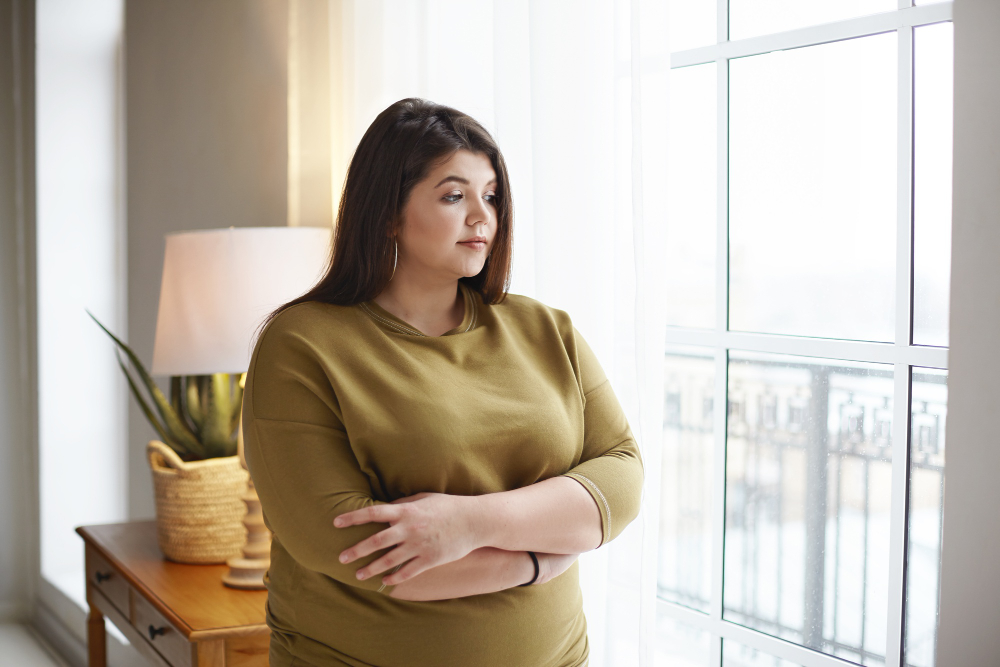Lipedema: What Does it Feel Like

Lipedema is more than just a physical condition; it’s an emotional and often misunderstood struggle. Affecting nearly 11% of women worldwide, lipedema causes a buildup of fat, most commonly in the legs and arms, that is resistant to diet and exercise. But what does living with lipedema actually feel like?
This blog explores the physical sensations, emotional toll, and daily experiences of life with lipedema. If you're looking to better understand the condition or seeking help, this guide will provide the clarity and support you need.
Understanding Lipedema
Lipedema is a chronic condition marked by the abnormal accumulation of fat that is often painful and disproportionate to the rest of the body. It typically begins during significant hormonal changes, such as puberty, pregnancy, or menopause. While the visual aspects of lipedema are often the first to be noticed, the physical sensations it brings can be equally impactful.
Physical Symptoms of Lipedema
For many women, lipedema starts with a feeling of heaviness or tenderness in the affected areas. Over time, this progresses into more pronounced and painful symptoms, including:
- Pain and Sensitivity: The fat deposits associated with lipedema are often tender to the touch, even during everyday activities like sitting or wearing certain clothes.
- Swelling: Many women describe their legs or arms as feeling swollen or bloated, especially after standing for long periods.
- Bruising: Easy bruising is a hallmark of lipedema, often occurring without significant trauma.
- Fatigue: The extra weight and discomfort can make it exhausting to carry out daily tasks, leading to an overwhelming feeling of fatigue.
- Skin Texture Changes: Over time, the skin may develop a dimpled or uneven texture, often compared to an orange peel.
These symptoms can worsen as the condition progresses, making early diagnosis and intervention critical.
Emotional Impact of Lipedema
Lipedema doesn’t just affect the body; it also takes an emotional toll. Many women describe feelings of frustration, low self-esteem, and isolation. This stems not just from the physical pain but from the misunderstandings surrounding the condition.
For instance, lipedema is often mistaken for obesity, leading people to incorrectly assume that the condition can be resolved with diet and exercise alone. This misinformation can make those with lipedema feel judged or unsupported.
Social Challenges
For some, the stigma surrounding lipedema can lead to limited participation in social activities. For instance:
- Clothing Choices: Loose or covered clothing often feels like the only option, not out of preference, but discomfort with the visibility of disproportionate fat deposits.
- Shame Around Appearance: Feeling misunderstood or “different” can lead to avoidance of situations like beach trips, gym classes, or communal sports.
Healthcare Frustrations: Difficulty finding specialists who recognize and treat lipedema often adds to patients' feelings of neglect.
Coping With Daily Life While Managing Lipedema
Living with lipedema calls for both mental and physical resilience. Here's a look at strategies to ease the burden of this condition and improve quality of life.
1. Self-Care for Physical Relief
While there is no cure yet, certain lifestyle adjustments can relieve discomfort:
- Compression Wear: Compression garments are often prescribed to reduce swelling and improve lymphatic flow.
- Low-Impact Exercise: Swimming, walking, or cycling are often helpful for maintaining mobility and boosting circulation without adding strain.
- Dietary Adjustments: Anti-inflammatory diets focused on whole, unprocessed foods may ease symptoms but don’t directly address fat accumulation.
2. Surround Yourself With Support
Connecting with others who have lipedema can provide validation and encouragement. Online communities, such as those on Facebook or Reddit, offer safe spaces to share experiences and solutions.
3. Address Emotional Well-Being
Don’t underestimate the importance of mental health:
- Therapy or Counseling: Work with professionals who specialize in chronic conditions.
- Mindfulness and Meditation: These practices can help manage stress and promote emotional balance.
Treatment Options for Lipedema
Early intervention is key to living a fuller, more comfortable life with lipedema. Treatments focus on symptom management and slowing progression.
- Manual Lymphatic Drainage (MLD): A specialized type of massage that encourages lymphatic fluid to circulate, reducing swelling.
- Liposuction for Lipedema (Lipedema Surgery): Unlike cosmetic liposuction, liposuction for lipedema involves removing fat deposits to decrease pain and improve mobility. It is often a turning point for many women with lipedema.
- Physical Therapy: Targeted exercises can improve mobility and help maintain strength in affected areas.
- Specialized Clinics: Seeking help from a lipedema treatment center ensures accurate diagnosis and a tailored treatment plan.
Why Early Action Is Important
Lipedema is progressive, meaning it worsens if left untreated. Identifying symptoms early and seeking professional care can prevent complications such as lymphedema or additional mobility challenges.
If you notice unexplained swelling in your legs or arms that feels painful or seems resistant to weight loss efforts, don’t hesitate to seek medical advice. You are not alone, and solutions are available.
Take the First Step Toward Relief
Lipedema may be challenging, but understanding the condition is the first step toward better management and care. If you're looking for a trusted lipedema treatment center, contact Byrd Lipedema Surgery Center today to schedule a consultation.
Our team is here to help you find relief, regain your confidence, and take back control of your body. Reach out, and let's work together toward a happier, healthier you.